BENEDICTINE MONKS
The Brothers of Saint John the Evangelist (OSB)
So that in all things, God may be glorified.
Rule of St. Benedict, Chapter 57
Our parish is doubly blessed by its association with the Brothers of Tanglewood Hill Monastery, Freeland. Not only do they provide Solemn Evensong on Monday evening at 5:30 p.m. at St. Augustine’s in-the-Woods Episcopal Church, but also offer several members of the St. Augustine’s the opportunity to practice the rule of St. Benedict as lay oblates to the order.
Now making their Church home at St. Augustine’s in-the-Woods, the Brothers of Saint John the Evangelist (OSB), originally known as the Ecumenical Fellowship of Saint John, were founded in the Spring of 1972 by five men — clergy and lay — from the Episcopal, Lutheran and Roman Catholic communions of the Church. All five, friends and frequent visitors in each other’s churches, expressed interest in the vocation to the religious life and in pursuing the goal of establishing an ecumenical religious community and monastery. Fr. Alden Franklin, an Episcopal priest since 1955, served as religious advisor, helping formulate an early Statement of Purpose. He has also been Celebrant at several Patronal Eucharists.
The first celebration of Saint John’s Day was December 27, 1972, at Village Church of Westwood (Lutheran) in Los Angeles. On Saint John’s Day, 1973, four of the founding group, two Lutherans and two Roman Catholics, committed their lives and made their Promises of Commitment at Saint John’s Episcopal Church, Los Angeles.
In the last 30 years, the yearly patronal celebrations have been hosted by a dozen different Episcopal and Lutheran parishes, including St. Augustine’s Episcopal and both Lutheran parishes, St. Peter and Trinity, on South Whidbey Island. Three of the Founding Brothers — David McClellan, Elmo Patin, and Richard Tussey — will form the core of the Whidbey Island monastic community. The Rt. Rev. Sanford Z.K. Hampton, retired, Diocese of Olympia, is the Episcopal Visitor.
Our Mission
To promote interest, study and understanding of the vocation to the religious life, and to sustain a Benedictine religious (monastic) community on South Whidbey Island.
Saint Benedict and His Rule
cSaint Benedict, the “Father of Western Monasticism,” wished his monks to be self-supporting and live in community. His Rule for Monasteries — a daily balance of liturgical prayer, manual labor, and spiritual reading — exacts no unusual austerities, but aims rather to cultivate the family spirit of the community and to establish moderation as an ideal.
Benedict established a monastery near Rome in about 525 AD, and during his lifetime set up 12 monasteries where he ruled as an abbot. The “Benedictine” movement spread quickly and became a great force in the development of Europe. The Benedictines were at the forefront among the great missionaries who converted the barbarians, teaching them agriculture and the arts, and settling them in towns and villages near the monasteries. Farm land was produced from wilderness where wild beasts had roamed. The example of democracy among the monks and their Rule conditioned the peoples of Britain and continental Europe for the eventual abolition of serfdom and the democratic forms of government gradually won. Today, there are Benedictine monasteries in most of the free world.
Our Vision of a Monastery
The monastery will be, first and foremost, our home and the place where we will pursue the Opus Dei, the Work (praise) of God — particularly the singing of the Divine Office in liturgical splendor. We currently provide Solemn Evensong on Monday evening at 5:30 p.m. and on holy days throughout the year at St. Augustine’s in-the-Woods Episcopal Church, Freeland, Washington.
Indeed, nothing is to be preferred to the work of God | Rule of Benedict 43:3
Saint Benedict also insisted that his monks balance their day with prayer and work (Ora et Labora), and we will have workshops where we can pursue our skills in stained glass, icon writing, horticulture, and music.
A monastery is also a place for quiet “retreat” and, as such, ministers to the needs of those seeking time away from the noise and haste of a busy world. Typically, this includes “quiet days” for individuals and formal group retreats conducted by a spiritual director. We also host periodic workshops on liturgy, music and arts of the church.
The monastery, named “Tanglewood Hill,” is located on beautifully wooded acreage on Scenic Avenue in Freeland. The land was a gift from a dedicated supporter of our ministry, and we recently installed a beautiful Celtic Cross thanks to the generosity of our many friends.




